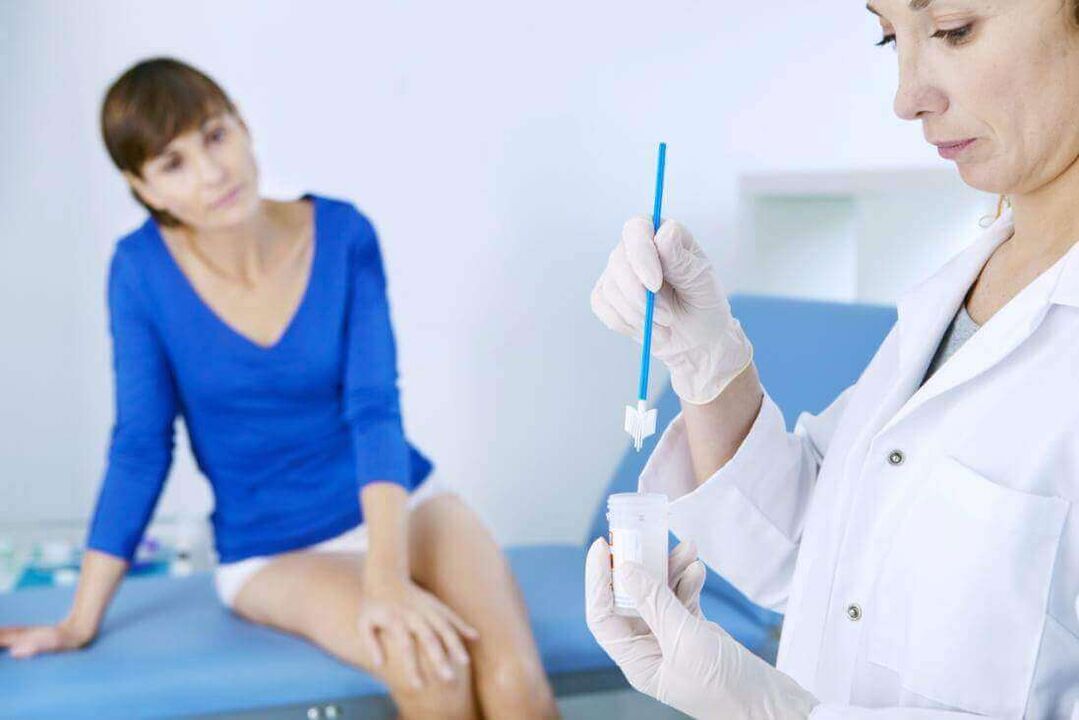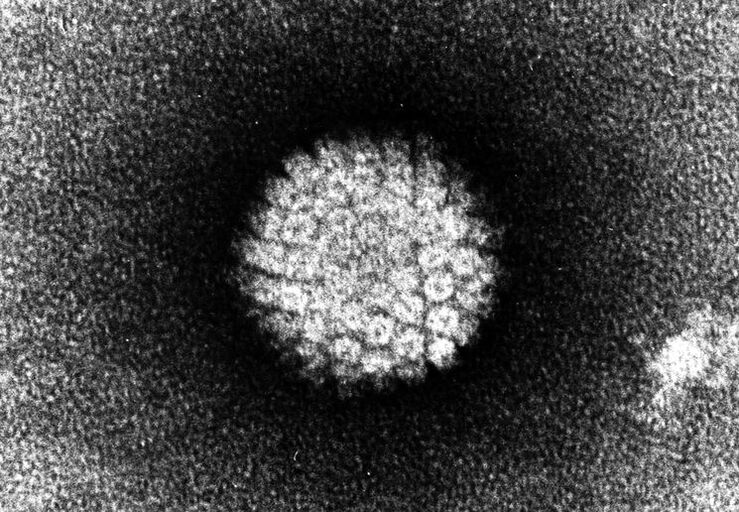
Papillomas are a problem faced by many people. They can appear in different parts of the body and can be very painful in some cases and cause no discomfort in others. Either way, they can be cosmetic flaws that bring a lot of anxiety. The excitement is not unfounded, as a virus that causes a virus to form on the skin could lead to oncology.
Most of the world's population are HPV carriers. This does not mean that we are threatened by a massive epidemic of cancer and other diseases that can occur against a background of weakened immune systems and the development of warts, genital warts and other skin defects. The main task of the patient is to reduce the risk of cancer. This can be formed by regular visits to a dermatologist, the necessary examinations and timely removal.
Why do papillomas appear on the body
There are many reasons for virus activation. The most common is decreased immunity, which causes uncontrolled cell reproduction. This is how innovation occurs.
Also at risk are people who are promiscuous, change partners frequently, and do not use reliable contraceptives. If a woman has HPV, she can pass it on to her baby during childbirth.
The way the virus enters the body can be different. This is the already mentioned unprotected intercourse, as well as skin contact with the carrier. That's why it's important to follow the simplest hygiene rules: wash your hands after traveling on public transport and don't walk barefoot in wet and warm swimming pools and saunas - high humidity creates a favorable environment for infection.

Human papillomavirus: what it is and how it spreads
HPV is a virus whose activity is manifested by changes in the properties of tissue growth. It enters the body mainly through the mucous membranes:
- Mouth - during oral sex;
- reproductive organs - during unprotected intercourse;
- Rectal - during anal sex.
As long as a person's immunity is strong enough, the infection won't manifest -- in this case, it's called latent. Once the defense is lowered, it is activated, causing the cells to multiply. The result of unbalanced tissue growth is the appearance of tumors—benign, with the potential to become malignant.
Growths of different shapes and sizes on the skin are the main symptoms of HPV. Mostly, genital warts and other types of warts appear in those areas that are subject to mechanical stress and are characterized by increased sweating (armpits, palms). They can also occur on the genitals around the anus.
main route of infection
- Sexual activity - occurs during sexual contact with an HPV carrier. The virus can be contracted through oral and anal sex.
- Family - less common, but still one of the main ones. Infections can be acquired in bathtubs, swimming pools, saunas, showers. It penetrates wounds, cracks and other skin lesions.
- Transmission during childbirth - Transmission of HPV from mother to baby is the rarest condition. But he is also one of the most at risk due to the threat of a compromised airway.
- Self-infection is also possible - it happens when the infection moves from one part of the body to another (machine shaving of legs to remove excess hair).
Cancer-causing viruses in the body do not indicate cancer development. However, they can lead to the development of malignant tumors. The main causes of cancer are:
- Promiscuous sex life, many partners - including those with papillomas, genital lesions of condyloma acuminatum.
- Presence of venereal and fungal diseases.
- Long-term use of oral contraceptives and intrauterine devices.
- Some gynecological diseases (endometriosis).
Can papilloma spread? Why does it grow? Are they dangerous? We have answered all of these questions above. Does the tumor need to be removed? Yes, there are several reasons:
- These are cosmetic flaws that, unlike moles, don't add glamour, but can cause serious discomfort -- both psychological and physical.
- The risk of damage is high as growth occurs most often in places subject to mechanical stress from constant friction, tight shoes, tight clothing, underwear. This leads to the introduction of new infections.
- The accumulation of HPV causes pathological changes in the cellular genome, leading to oncological and other complications.
Earlier we talked about what papillomas are and why these tumors appear on the body. We recommend that you deal with all changes in your skin condition. At the same time, to avoid skin infections and the risk of benign warts turning into malignant tumors, you should not try to fix the problem yourself. Modern medicine has effective non-surgical treatments that can help you forget about cosmetic flaws forever and reduce your risk of developing tumors.
Types of papilloma: main types and their characteristics

- Flat warts are usually round or oval in shape. They don't actually extend beyond the surface of the epidermis, similar to burns after contact with nettle leaves. In most cases, they occur during adolescence. Where to locate: neck, hands, face, calves. Color is pink to pale yellow. Often this formation is itchy, causing discomfort.
- Vulgar - the most common variety. Most often on feet, hands, and 3-10 mm above the skin. Whole wart clusters may grow from the mother and daughter.
- Sharp - Occurs most often in the anogenital area, they are small growths with a single nodule or many small structures. Color - pink or red. All tumors of different sizes. They either sit directly on the skin or attach to the skin with "legs" causing itching and discomfort that require prompt removal. These warts are called warts and are spread through sexual contact.
- Filiform - These are the papillomas we talked about at the beginning of the article. Mostly, they appear in people over the age of 35 and increase with age. This phenomenon has another name - acrochords. These are thread-like growths on the skin that look like a small nodule that gradually grow and become oval in shape, becoming more and more elongated. This wart occurs in areas of thin skin that are prone to wrinkles, and areas that sweat excessively—the neck, armpits, under the breasts, groin, near the eyes, eyelids, etc.
- Bladder and urethral papilloma - This type of tumor is most common in men. Symptoms: Pain during urination, abdominal pain, hematuria. Large growths can be surgically removed. In this case, it is not the dermatologist who handles the diagnosis and treatment, but the urologist.
- Failure of the larynx, trachea, mouth - in this case, the wart looks like a papilla and grows gradually, causing a reduction in the lumen of the airway. If the vocal cords are affected, there may be a language barrier. This form of the virus is especially dangerous for infants, who may contract the virus during childbirth from mothers who pass the infection to their newborns.
We examine the types of papillomas and why they appear on the body, to find out why and where unsightly tumors appear, and why they are dangerous. There is still a need to understand how to remove cosmetic defects that can lead to serious complications.
Diagnostic function
To find out which method works best, consult a dermatologist. He will prescribe an HPV test (PCR). The method used is one of the most informative. It will help identify infectious DNA in various secretion samples, as well as determine the type of virus.
You may also need:
- Colposcopy.
- Cytological smear.
- Histological analysis.
how to remove papilloma
- Cauterization - produced by a special preparation, which includes highly purified chemicals - affects the active components of the tumor.
- Removal with liquid nitrogen - in contact with affected skin at low temperature. The damaged area freezes immediately, so the site of tumor formation loses its sensitivity, turning from pink or reddish to white. After a few weeks, the area treated with nitrogen healed. Disadvantage of this method: Difficulty determining exposure depth.
- Laser Removal - In this case, the papilloma is burned away by a laser beam. After the course of treatment, a small wound is left on the skin, which must be treated regularly. It heals within a few weeks of being burned. There is no recovery period, as the regeneration process requires no specialist intervention. At the same time, no scars and scars are left on the location of the wart. The disadvantage of this method is that it is not suitable for various lesions of the epidermis, herpes and infectious diseases. Pregnancy is a contraindication to laser cautery.
- Electrocoagulation is another method based on exposure to electrical current. High temperatures can lead to the destruction of papillomas. However, when the skin is treated in this way, it is inevitable to damage healthy areas, increasing the healing time.
- Surgical removal - prescribed if the tumor has grown and other methods have not worked. Doctors use local anesthesia. After surgery, suture. They are removed a week after the warts are removed.
- Folk methods - most commonly from papilloma, they use celandine juice, vinegar, garlic. This is believed to help burn off the tumor. These methods are not safe and do not reduce the risk of recurrence. They usually cause damage to healthy areas of skin around the growths. We recommend that you do not engage in self-treatment, but consult your doctor promptly - only he can determine which of the listed methods will be most effective in dealing with the problem.
Patients of dermatologists often ask if it is possible to permanently get rid of HPV, which can cause unpleasant rashes. We remind you that the virus itself is present in the human body and triggers uncontrolled cell reproduction, it cannot be cleared - it remains in the body and manifests itself during periods of weakened immune system, hormonal disruption and stress. Therefore, a treatment for the infection itself has not yet been invented. Only its external manifestations are eliminated - warts, papillomas and other types of warts.
The main task for HPV carriers is to reduce the risk of recurrence. For this you need:
- Follow personal hygiene rules - including intimate relationships.
- Use condoms during sexual contact and avoid promiscuity.
- Maintain the body's defenses.
- Avoid direct contact with infected people.
Among the means by which its action helps to get rid of papilloma and reduce the risk of its recurrence is a drug containing anti-inflammatory cytokines that block the synthesis of viral proteins. You can use this cream at home - once a day during the course of treatment prescribed by your doctor.
Filamentous warts are a phenomenon that indicates the need for a thorough examination of the body. Don't forget it and see your doctor on time. Delays increase the risk of cancer. Don't try to remove the tumor yourself - folk methods aren't very effective and don't guarantee complete disappearance. Additionally, they can cause severe skin irritation, causing damage to it, which can lead to secondary infections and aggravate the condition. Only use methods recommended by experts. Combined with preventive measures, they will help avoid recurrence and forget about years of problems.















